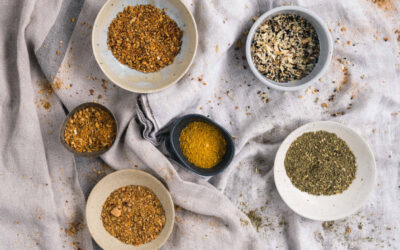The nutritional value of different foods such as soda, French fries, and chips leads them to be labeled as junk food. Pizza, made using dough, cheese, tomato sauce, and various toppings, is also often classified as such.
Related: Four reasons why you need your own pizza oven
It is often seen as an indulgent treat that is unhealthy for you and more so when you are focused on a healthy and balanced diet. But can pizza be good for you? There is enough evidence that says it can be.
The answer mainly lies in how it is made
How healthy a slice of pizza is depends on several factors, one of which is how it was made. Is the pizza topped with fatty meats and whole milk cheese? Is it a deep-dish pizza cooked in a greasy pan, or does it have a thick crust? How well these factors are controlled determines how healthy the pizza is, and the best way to do so is to cook healthy pizza at home.
When you cook pizza at home, you can control everything that goes into it. Doing so can help you reduce the amount of sugar, salt, fat, and even wheat that goes into the pizza. Buying a pizza oven and cooking one at home also helps you avoid the preservatives and chemicals that are typically found in commercially prepared pizzas.
All you need to prepare a healthy pizza at home is a pizza oven and a recipe for a healthy pizza. There are several options available when buying a pizza oven with things like the fuel it uses and the size of pizza you can cook being the major considerations. Brands like Ooni sell outdoor pizza ovens perfectly suited for several applications including in outdoor kitchens and the wider outdoors.

Photo by Rahul Upadhyay on Unsplash
Pizza: Keep it simple
As mentioned, most of what makes pizza unhealthy is what is added to it. Extra cheese and certain meats can make it very unhealthy. However, keeping things as simple as possible ensures the pizza remains nutritious while also being healthy.
Pizza as originally designed is very straightforward. A pizza should have lots of tomato sauce, a simple crust, and a sprinkling of your favorite cheese. A balance of these three results in a well-balanced and satisfying pizza full of healthy fats, proteins, and carbohydrates.
It is also a good idea to go easy on the cheese. Cheese does make pizza taste better but reducing how much is added to each slice of pizza reduces the calories and amount of fat you consume and makes the pizza vegan friendly.
If you cannot part with the cheese, consider making pizza at home so you can use a low-fat version of the cheese you like or use half the amount added to a typical pizza to make a low-fat pizza.
Order or make thin crust pizza
When talking to Insider, Chelsey Amer, a registered dietitian nutritionist, said that most of the calories and carbohydrates in a pizza are found in the crust. For this reason, she recommends ordering a thin crust pizza that contains fewer calories than a pizza with a thicker crust. She also says that a thinner crust leads to a better balance of fat, protein, and carbohydrates, three nutrients that the body needs in balanced quantities.
Pizza toppings can be healthy
The toppings you choose for your pizza can be surprisingly healthy depending on the ones you choose. Vegetables and lean proteins as toppings provide the nutrients you need in your daily diet. Greasy slices with extra pepperoni or a deep-dish meat pizza may not be the best options for you, but there is no issue ordering one with corn or bell peppers.
Pizza contains lots of protein
The body requires protein for various functions and processes. An average slice of pizza contains 11 to 12 grams of protein while an adult should consume 7 grams of protein for every 20 pounds of body weight. This protein helps us feel satiated and is a crucial building block for our bodies. While everyone has different protein needs, eating pizza in moderation can help meet some of these requirements.
Adding meat to a pizza is the best way of increasing its protein content. As with the toppings, the type of meat you add to the pizza also determines how healthy it is. Instead of sausage and pepperoni, opt for leaner proteins like lean steak in small quantities, ground turkey, or chicken.
Pizza can help you consume more vegetables
Many people do not enjoy eating raw vegetables from a bowl or pile. For these people, pizza can be the perfect vehicle for increasing vegetable consumption. When combined with low-fat cheese, healthy sauce, and a thin crust, vegetables can become much more palatable for some people.
A pizza can also be a good way to try some vegetables that you do not typically consume. Options like onions, peppers, olives, and mushrooms are all common pizza toppings and you can also try uncommon topping options like asparagus, peas, broccoli, and squash.
Fresh vegetables contain antioxidants, minerals, and vitamins that have a host of health benefits. Avoid fried vegetables – eggplant for example – as these introduce additional fat and calories. Remember, the aim is not to eat a pizza for every meal because you are using it to consume more vegetables, but to instead try to make it as healthy as possible when you eat it.

It can make your bones strong
Dairy products like yogurt, milk, and cheese have very excellent sources of calcium. Their calcium is also absorbed much better than one from plant sources. The body uses calcium to maintain strong bones and to prevent the development of conditions like osteoporosis which leads to brittle and weak bones.
Always ask for low-fat and “light” cheese when ordering a pizza. Many pizza shops add too much cheese as a topping which is unhealthy for you.
Pizzas can be a source of lycopene
Lycopene is an antioxidant found in different fruits such as raspberries and tomatoes. Most pizza shops use tomatoes for their paste and sauces, and this is the source of the Lycopene in your pizza. According to the National Library of Medicine, Lycopene can help reduce cholesterol levels in the body in addition to helping lower blood pressure.
There is also evidence to show lycopene is absorbed much faster when tomatoes are cooked than when they are raw. The USDA says a tablespoon of cooked tomato sauce, which is contained in about one slice of pizza, contains the same amount of lycopene as a half-cup of tomatoes.
Pizza crust is a source of fiber
Some pizzerias let you choose between regular and whole wheat pizza dough. Whole wheat is much better for you because it contains carbohydrates and calories than regular dough. Additionally, whole grain dough has a much higher fiber content than regular dough.
The higher fiber content makes it more filling, so you eat less of a whole grain pizza. The additional fiber content is great for gut and bowel health, can reduce cholesterol levels, aid in weight loss, and help the body control its glucose levels much better.
Although typically categorized as junk food, pizza does not have to be an unhealthy meal option. How healthy it is depends on several factors, mainly how it is prepared and what is added to it. Even when you make a pizza as healthy as possible, it is still a good idea to eat it in moderation. The pizzeria might use unhealthy ingredients and toppings even when you ask them not to. Ideally, make yours at home so you have total control over what goes into it.

I am a 50-something Torontonian who loves everything about my city. It’s been my home, my playground, for my entire life. I went to school here. I met my wife here. I own real estate here. I love writing about the transformation of my city on the world stage, which hasn’t been anything short of dramatic. That continues on, as I write this. I write on the real estate scene. I write on travel and fashion. I like following the world of luxury watches.
But I love writing about cars – check that, luxury cars, a level of superior, engineering sophistication, high performance and style, that transports you not just from one destination to another but also out of whatever you are going through on a particular day, whatever mood you are in, all to another head space. It’s complete and total exhilaration, head to toe.
Check out my stories, and email me direct at mkeast@regardingluxury.com








